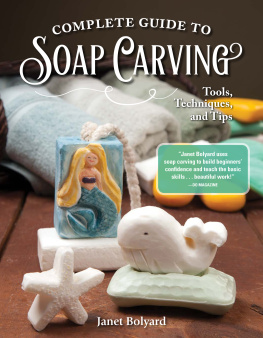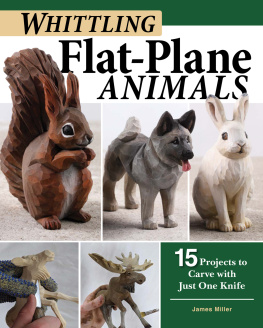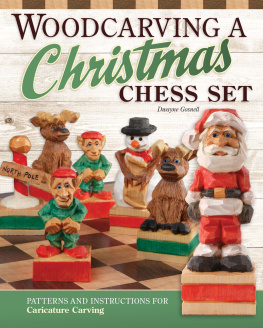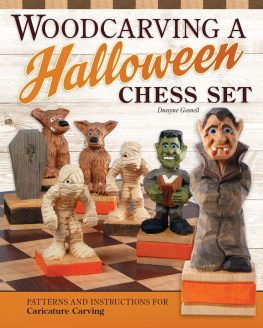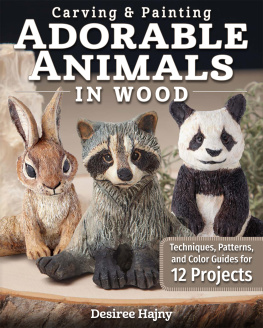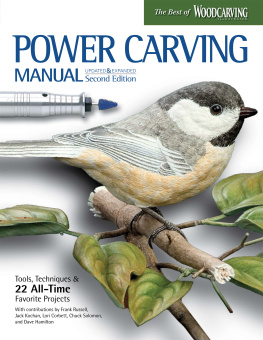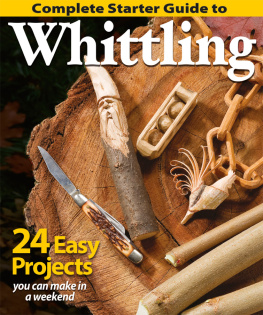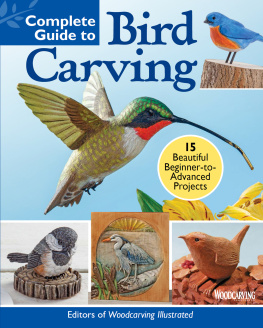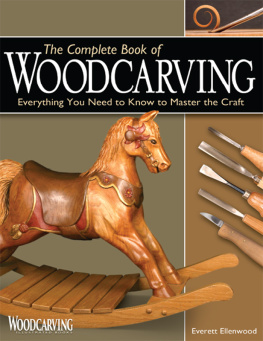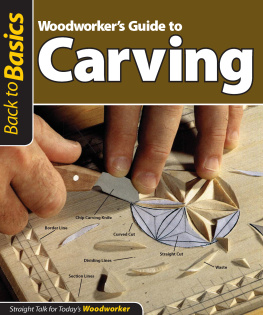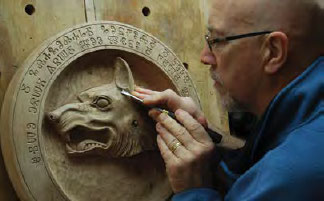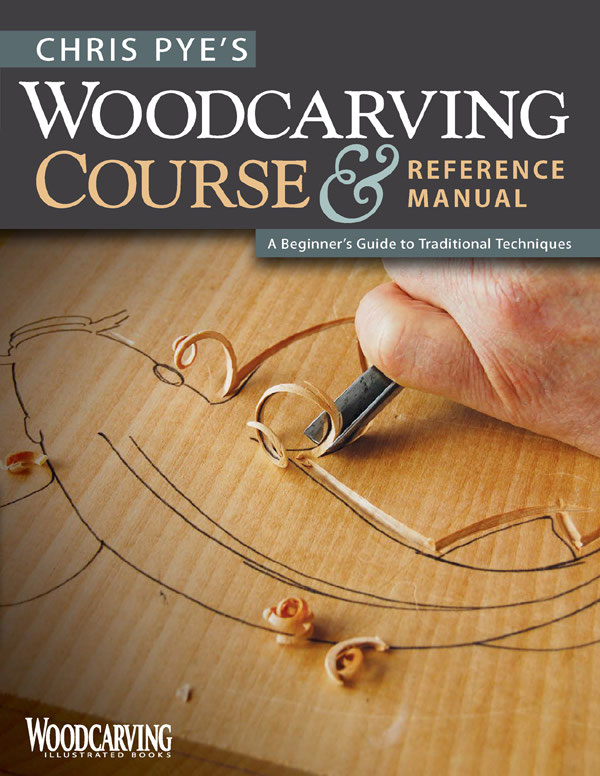
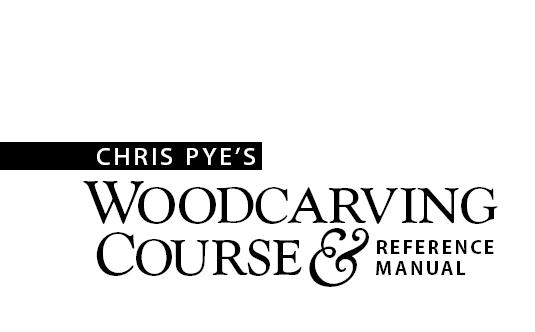
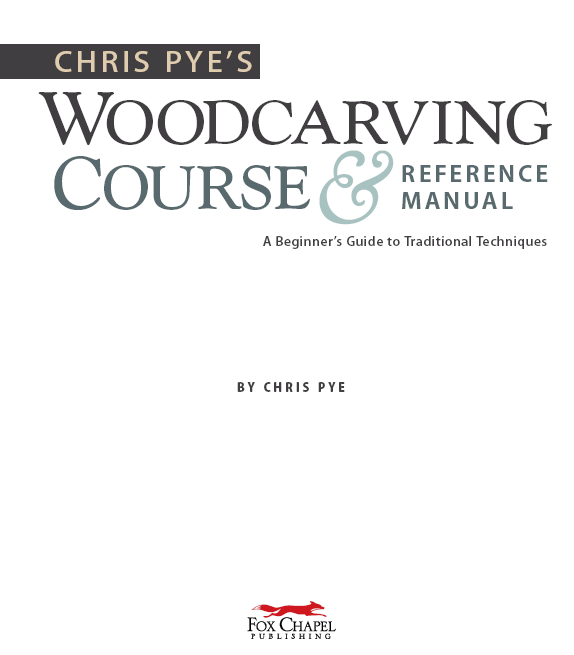
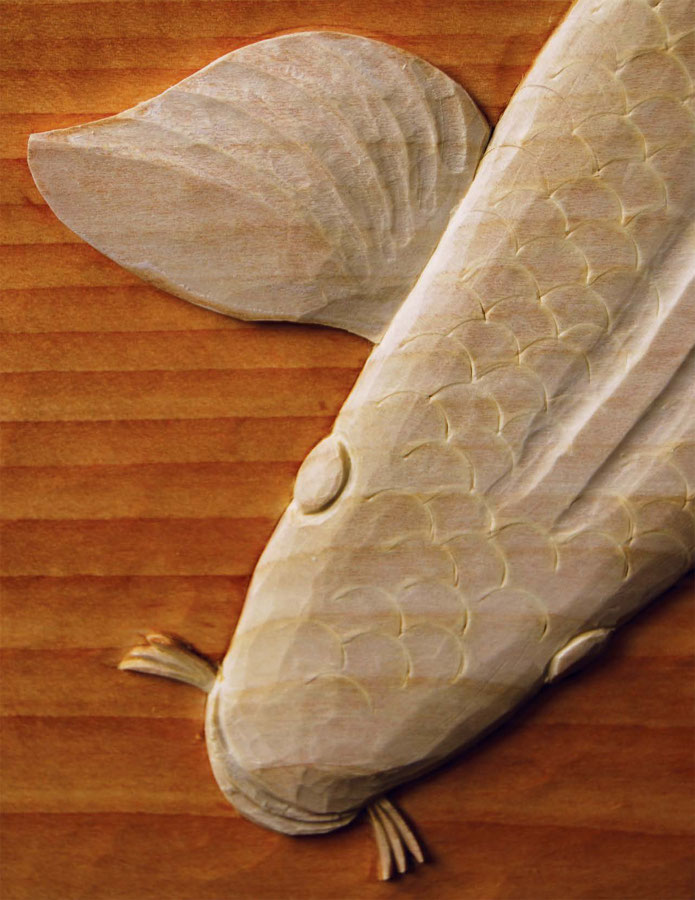
For Carrie, who brought me SunDog
ACKNOWLEDGEMENTS
Many people have contributed directly and indirectly to this book and I owe a great deal of general and specific thanks:
I have learned so much from the hundreds of students who have honored me with their time over the years. This book is all yours; I have you in mind when I write.
Specifically, Id like to thank the 2009 Intermediate and Advanced Class at the Center for Furniture Craftsmanship, Rockport, Maine, USA, where I have the privilege of teaching every year: Wesley Albright, Peg Van Brunt, Gene Ostreicher, Lorie Schweer, Brian Scott, and Roger Smith; giving a particular mention to David Paul Lange. We sat around the lunch table and discussed the first drafts of my between-chapter inserts. I was reassured to find they were as useful and intelligible as I had hoped.
Thank you also to Peter Korn, executive director at the Center, for enabling me to carve the baseball cap in Chapter in the workshop there.
Heartfelt thanks go to my very good friend Mark Kimble, who did me a great service by re-carving superfluous material here and there, visualising in words what I might do in wood.
Lastly, many thanks indeed to Shannon Flowers, who commissioned the original articles for Woodcarving and Peg Couch, who commissioned this book, for their support and enthusiasm; and to Kerri Landis for her sensitive and thorough overseeing of the publication of this book.
ABOUT THE
Chris Pye has some thirty years of experience as a carver, and is the author of three woodcarving DVDs and six books: Woodcarving Tools, Materials, and Equipment (1995, 2002), Carving on Turning (1995), Lettercarving in Wood (1997), Relief Carving in Wood (1998), Elements of Woodcarving (2000), and Woodcarving Projects and Techniques (2007). In 2011, Chris launched an instructional, video-rich carving website.
From his studio in Herefordshire, England, Chris works on a broad spectrum of commissions, including lettering, heraldry, furniture ornamentation, architectural carving, and sculpture. He is a member of the Master Carvers Association, with clients including His Royal Highness the Prince of Wales.
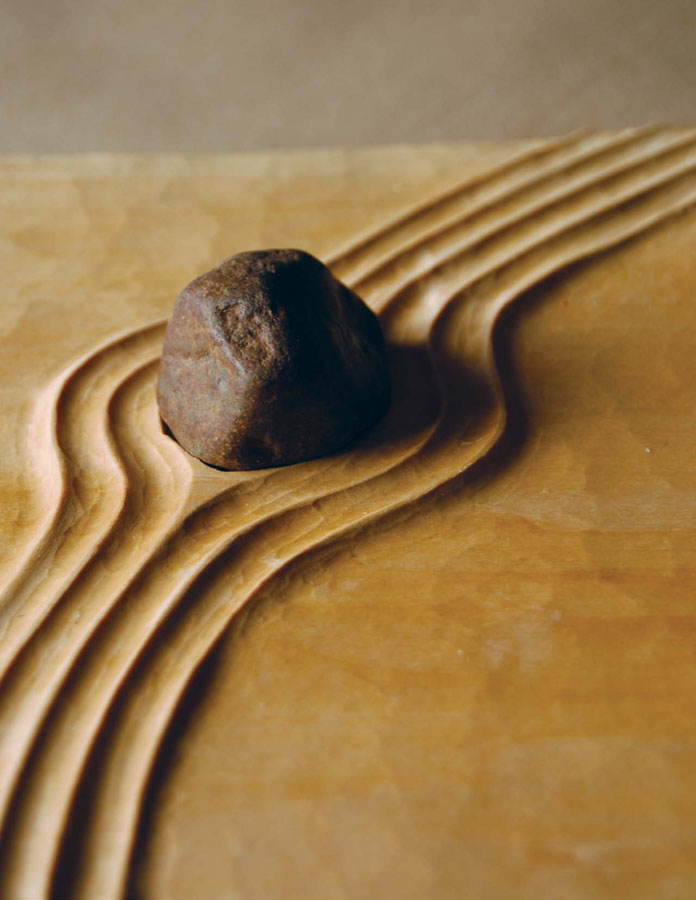
CONTENTS
Introduction
SECTION I: AND
Technical Mastery
Chapter 1: Tools of the Trade
Your Tools are Your Carving
Chapter 2: Commissioning Your Carving Tools
Understanding Wood
Chapter 3: Supporting Cast
SECTION II:
Getting to Grips
Chapter 4: Handling Your Carving Tools
Thin Edge of the Wedge
Chapter 5: The Outcome of the Tool
SECTION III:
Good Habits
Chapter 6: Simple Moldings
Surfaces, Lines & Junctions
Chapter 7: Veiner and V-tool:
SECTION IV:
Form Into Space
Chapter 8: An Exercise in Setting-in
Over the Horizon
Chapter 9: Low Relief
A Touch of Drama
Chapter 10: High Relief
Feel the Form
Chapter 11: Pierced Relief
SECTION V: IN THE
Entering Chaos
Chapter 12: In the Round: Baseball Cap
Making It Up as You Go Along
Chapter 13: In the Round: Wren
Index
INTRODUCTION
I carve in what might be called the traditional manner, sometimes referred to as European. I rely primarily on shaped gouges, chisels, and related tools. I dont often use the knives that are so commonly favored in what might be called traditional American carving. And I dont use power tools for anything other than roughing out or texturing. Its not that I have anything against knives or power equipment. Skilled carvers do lots of lovely work with both, and sometimes they are exactly the tools I need in my own carving. But I admit to being in love with my chisels and gouges and with the advantages they seem to provide me in terms of design or final results.
Its been my experience that a lot of knife users are put off by carving tools. Perhaps its the many different shapes or the pressure of having to choose the best tool for a particular job. And then theres that dreaded sharpening! This is a pity. Ive absolutely no doubt that chisels and gouges can take the carver to places where knives simply cannot go. Indeed, gouges superseded knives and axes in the history of carving precisely because of these advantages.
Unlike my other books, which cover specific topics such as letter carving, Ive written this book as a general introduction to traditional woodcarving. Although the bulk of this material originally appeared as a series of articles in Woodcarving what you hold here is not simply a reprint. I have revised and added substantially to these essays, which the publishers in turn have reformatted.
In this book, I begin with basics, aiming to undo some of the mystery surrounding the selection and sharpening of traditional carving tools. From these fundamentals, we pass on to simple exercises that demonstrate what these tools can do when we hold and apply them properly. Finally, well tackle a series of projects that encourage us to bring principle and practice together in the actual process of carving.
I see the book as a progressive course and I am assuming newcomers will start at the beginning and follow through the book with me. However, the projects are self-contained and its quite possible for more experienced carvers to dip into them as they will.
One important addition is the inclusion of the short inserts between chapters. Here Im combining aspects of technique that I think are especially critical with more general thoughts on the carving process. In every case, these are points I find myself emphasizing time and again, year after year, with all of my students. Each insert relates in some specific way to its following chapter, but, taken together, they sketch out a much broader woodcarving landscape.
I dont pretend that this present study is in any way complete. Indeed, I strongly recommend you fill out these basics with the specifics I focus on in my other publications and
Think of learning to carve in the same way as studying the guitar: no one would expect you to play a Rodrigo guitar concerto straight off! A guitar teacher would first show you how a guitar works mechanically, and then show you how to tune it. Next would be simple finger exercises, the earliest phases of feeling your way around, strengthening your fingers, developing your ear, and training your muscle memory. As the exercises become more challenging and you practice more diligently, your fumblings begin to resolve themselves into proper tunes. This is true of any skill and certainly true of carving.


